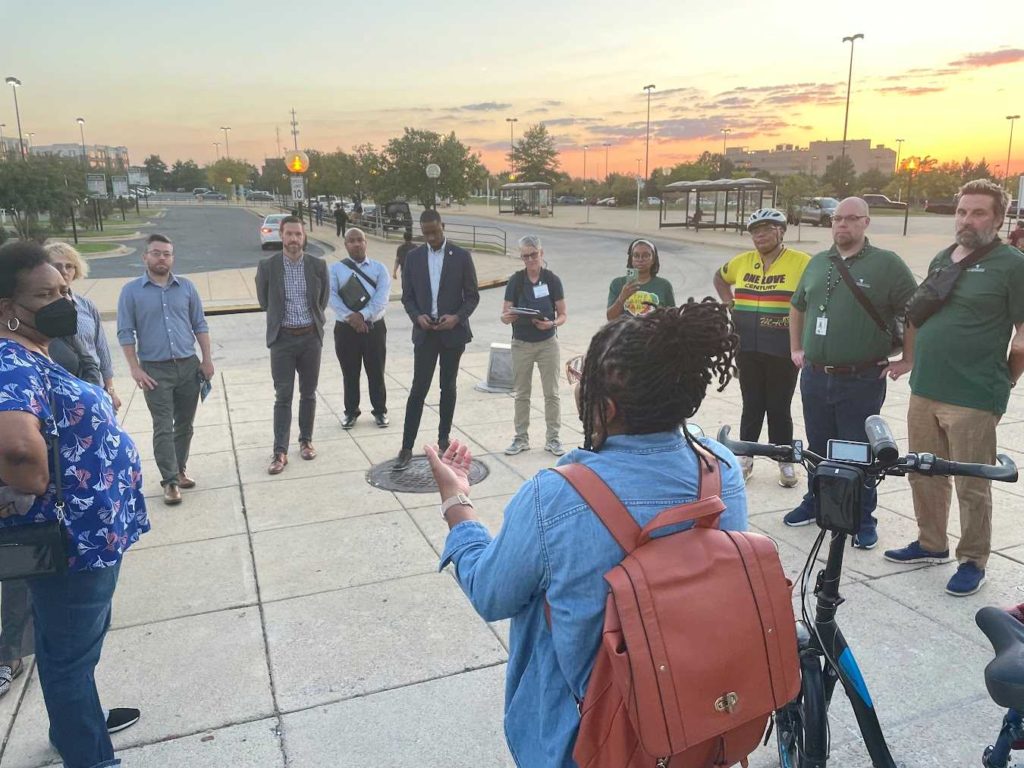With your help, we can help Capitol Heights Metro station turn into a safer, more walkable, vibrant mix of housing and businesses with great places to catch the bus and Metro.
Category: Maryland
CSG comments on Ride On Reimagined
A majority of riders also specifically identified more frequent service as a higher priority for them than shorter distances to bus stops: “When given the choice, most prefer shorter waits between buses more than they want shorter walks to the bus stop.”
For this reason and according to Ride On Reimagined’s own survey data we believe that frequent bus service should be a higher priority than on-demand (Flex) service. Plans for future bus service should reflect the fact that a majority of riders have identified frequency as their top priority.
CSG in the News: “Ride On Reimagined” will bring Montgomery County’s buses into the 21st century — if it’s funded
“And this is something that we’ve been working with WMATA on.” Carrie Kisicki, Montgomery Advocacy Manager, at the Coalition for Smarter Growth, mentioned two important routes in the draft plan, 170a from Bethesda to Germantown, and 102a from Silver Spring to Germantown, with connections to White Oak and Aspen Hill. “The Express routes will be run 7 days a week at high enough frequencies to provide truly useful upcounty-downcounty connections,” she explained, providing service to areas with great need.
Event Materials: Ride On Reimagined Virtual Open House with MCDOT (Nov 2023)
The Ride On Reimagined study is a comprehensive, forward-looking assessment of our county’s bus network intended to guide the future development of our transit system.

Action Alert: Support More Frequent Bus Service for Montgomery County
Weigh in to tell Ride On that frequency must be a priority for high-quality bus service that gets people where they want to go, and share your thoughts on other proposed changes!
CSG comments on state DOT draft Carbon Reduction Strategies
The Coalition for Smarter Growth respectfully asks your consideration of these comments as you refine your Carbon Reduction Strategies (CRS) prior to submittal to FHWA next month. These comments build on our October 17 letter to the National Capital Region Transportation Planning Board.
Testimony: Annual Permit Allocation – Comments and suggested amendments
We believe we can do this while building more housing in the right places to address the overall need for housing, and to help make housing more affordable. Our land use policies and infrastructure investments need to incentivize and encourage private investment to build more homes that are connected to existing services, transit, employment centers, and other essential destinations. We also need to remove the many barriers that discourage this kind of investment.
Comments on MDOT Consolidated Transportation Program (CTP) Tour FY24-29, Prince George’s County
As a member of the statewide Transform Maryland Transportation Coalition (TMTC), we ask MDOT to flex 50% of the federal funds, as allowed by federal law, from the Surface Transportation Block Grant and National Highway Performance Program formulas towards needed investments in eligible transit, safer streets, bicycle, and pedestrian projects, and transit vehicle electrification.
EVENT: Branch Ave Metro tour and placemaking meetup, Oct. 3, 2023
Connectivity + placemaking: Unlocking development around transit at the Branch Av. Metro station, with RISE Prince George’s.
On Oct. 3, 2023, in collaboration with RISE Prince George’s, we explored Prince George’s effort to focus future growth within the beltway and established communities by taking a look at the Branch Avenue Metro station area. We were welcomed by District 8 Council Member Ed Burroughs, III. Following the Council Member, we discussed Metro station area planning and development, zoning, street design, and walk and bike access. We then walked to Apollo Restaurant Row and convened a panel discussion on Prince George’s emerging placemaking initiatives.
Resources:
The Capital Market Turnip Tour
WMATA Joint Development 10-Year Strategic Plan
Downtowns Are Changing, but ‘Haven’t Plateaued Yet’
Premium grocery stores are missing from the region’s high-income Black neighborhoods

Brittney Drakeford, urban planner, speaks to the group about creative placemaking. Pictured: District 8 Council Member Ed Burroughs, in the middle facing the group.
Letter: A better design for the Medical Center Drive/I-495 interchange
We support the exciting vision you have laid out for a vibrant, walkable Downtown Largo and Blue Line corridor. In order to achieve this vision, the Maryland State Highway Administration (SHA) should wholly rethink their current proposals for a greatly expanded I-495/Medical Center Drive interchange.
